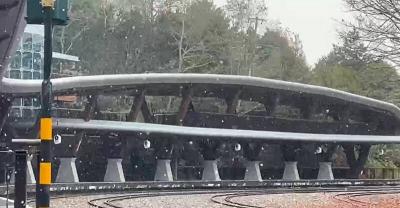Taiwan should change its defense strategy and concentrate on “guerrilla” warfare according to a lengthy new report from a Washington-based policy research institute.
“Despite the gravity of Taiwan’s situation, it would be premature to consider its defense a lost cause,” the report said.
Prepared by the Center for Strategic and Budgetary Assessments (CSBA), the report said that with Taipei confronted by a Beijing regime that places a growing emphasis on its ability to quickly win small, local wars, “time has emerged as Taiwan’s single-most precious strategic commodity.”
Acquiring and maintaining the ability to protract any conflict with China “should therefore be at the very heart of Taiwan’s defense strategy” the report said.
In the event of war, the principal aim should be to impede the ability of China’s People’s Liberation Army’s (PLA) to control the airspace and seas around the nation using guerrilla tactics.
“If the PLA were to initiate a war, it would likely set air supremacy and naval mastery as top objectives in order to facilitate subsequent attacks on, or a blockade of, Taiwan, break Taiwan’s political will, or set conditions for a subsequent invasion,” the report said.
According to the report, as long as the nation retains, or appears to retain, the ability to destroy a significant fraction of the amphibious shipping and transport aircraft required for a successful invasion, it would reduce the probability of such an invasion ever being launched.
Taiwan should therefore adopt a sea denial strategy that is complemented and protected by an unconventional air defense campaign along the lines of North Vietnam’s use of air defenses in its war with the US.
“Doing so would buy critical time in which outside powers could intervene and raise the specter of a protracted war, which may in and of itself serve as a deterrent to PRC [People’s Republic of China] aggression,” the report said.
The report was written by former US deputy assistant secretary of defense Jim Thomas, retired US Air Force officer John Stillion and CSBA research fellow Iskander Rehman.
Taiwan does not need to exert absolute control over its surrounding waters to succeed, the authors said.
“It must simply be able to identify and successfully attack a significant portion of any approaching blockade or invasion fleet,” the report said.
To this end, Taipei should build a fleet of about 42 midget submarines similar to those used by North Korea and Iran.
These midget submarines — with a displacement of 120 tonnes — would be more easily produced indigenously and are a fraction of the cost of the large diesel-electric vessels now being planned.
As the midget subs harass the invasion fleet — most likely consisting of 32 amphibious transport ships and 60 naval combatant escorts — Taiwan would also need about 1,200 anti-ship cruise missiles (ASCM).
“These could be stored in road-mobile, four-pack launchers with the same external appearance as trucks ferrying standard 20-foot shipping containers,” the report said.
At the same time, Taipei needs to place heavy emphasis on mining.
The report said pre-positioning small, lethal unmanned underwater vehicles and smart mines in the Taiwan Strait or near Chinese ports would complicate Beijing’s offensive plans to achieve command of the strait and blockade the nation’s ports.
Together, 42 midget submarines, 1,200 ASCM and launchers, and a large inventory of mines would cost about US$1.5 billion, less than the planned eight diesel-electric subs, “while providing greater sea denial capability.”
Rather than spending billions of US dollars to recapitalize its inventory of fighter aircraft, the nation should build a highly distributed and resilient network of ground-based air defense systems.
“The main objective behind Taiwan’s air defense effort should not be to destroy every intruding PLA aircraft, but rather to impose real and virtual attrition, while surviving to operate for as long as possible,” the report said.
If China succeeded in establishing a beachhead, the Taiwanese army could “melt into the island’s urban and mountainous areas in order to wage a war of a thousand cuts against PLA occupation forces,” the report said.

US President Donald Trump said "it’s up to" Chinese President Xi Jinping (習近平) what China does on Taiwan, but that he would be "very unhappy" with a change in the "status quo," the New York Times said in an interview published yesterday. Xi "considers it to be a part of China, and that’s up to him what he’s going to be doing," Trump told the newspaper on Wednesday. "But I’ve expressed to him that I would be very unhappy if he did that, and I don’t think he’ll do that," he added. "I hope he doesn’t do that." Trump made the comments in

NOT AN OPENING: Trump’s violation of international law does not affect China’s consideration in attacking Taiwan; Beijing lacks capability, not precedent, an official said Taiwanese officials see the US’ capture of the president of Venezuela as a powerful deterrent to Beijing’s aggression and a timely reminder of the US’ ability to defeat militaries equipped with Chinese-made weapons. The strikes that toppled Venezuelan President Nicolas Maduro signaled to authoritarian leaders, including Chinese President Xi Jinping (習近平), US President Donald Trump’s willingness to use military might for international affairs core to US interests, one senior official in Taipei’s security circle said. That reassured Taiwan, the person said. Taipei has also dismissed the idea that Trump’s apparent violation of international law could embolden Beijing, said the official, who was not

A cold surge advisory was today issued for 18 cities and counties across Taiwan, with temperatures of below 10°C forecast during the day and into tonight, the Central Weather Administration (CWA) said. New Taipei City, Taipei, Taoyuan and Hsinchu, Miaoli and Yilan counties are expected to experience sustained temperatures of 10°C or lower, the CWA said. Temperatures are likely to temporarily drop below 10°C in most other areas, except Taitung, Pingtung, Penghu and Lienchiang (Matsu) counties, CWA data showed. The cold weather is being caused by a strong continental cold air mass, combined with radiative cooling, a process in which heat escapes from

Snow this morning fell on Alishan for the first time in seven years, as a strong continental cold air mass sent temperatures plunging across Taiwan, the Central Weather Administration (CWA) said. The Alishan weather station, located at an elevation of about 2,200m in central Taiwan, recorded snowfall from 8:55am to 9:15am, when the temperature dropped to about 1°C, the CWA said. With increased moisture and low temperatures in the high-altitude Alishan area, the conditions were favorable for snow, CWA forecaster Tsai Yi-chi (蔡伊其) said. The last time snow fell at the Alishan weather station was on Jan. 10, 2018, while graupel fell there